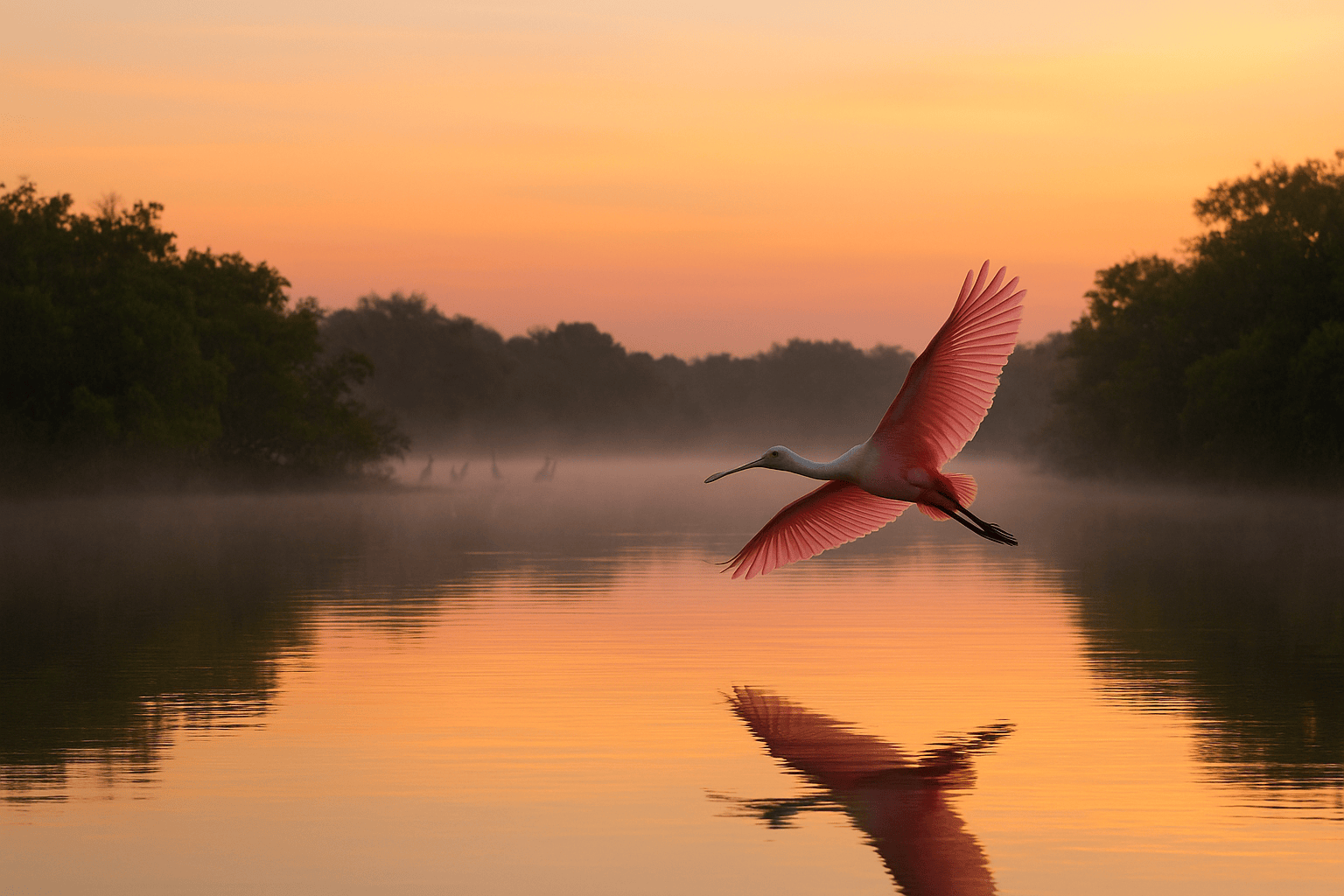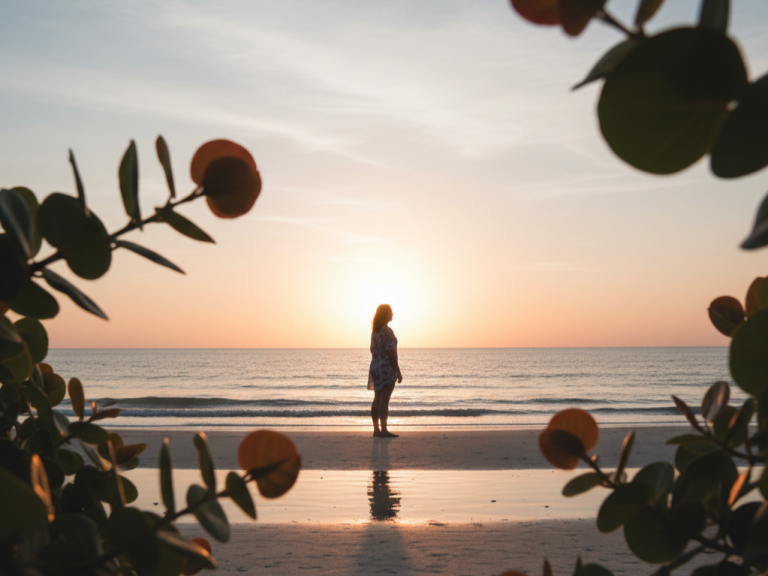Their pink color isn’t magic — but what causes it might surprise you…
It happens quickly — the kind of moment you almost miss if you blink.
A quiet lagoon at dawn, mist drifting above the mangroves, egrets half-awake — and then, a flash of pink sweeps across the water.
For many Sanibel locals, spotting a roseate spoonbill feels like seeing magic in motion. Their graceful glide, the light catching their wings — it’s a scene that turns an ordinary morning into something almost sacred.
But beyond their beauty lies a fascinating story of biology, adaptation, and survival — one that connects these blushing travelers to the very heart of Florida’s wetlands.
🦩 The Science of Pink — How Nature Paints a Bird
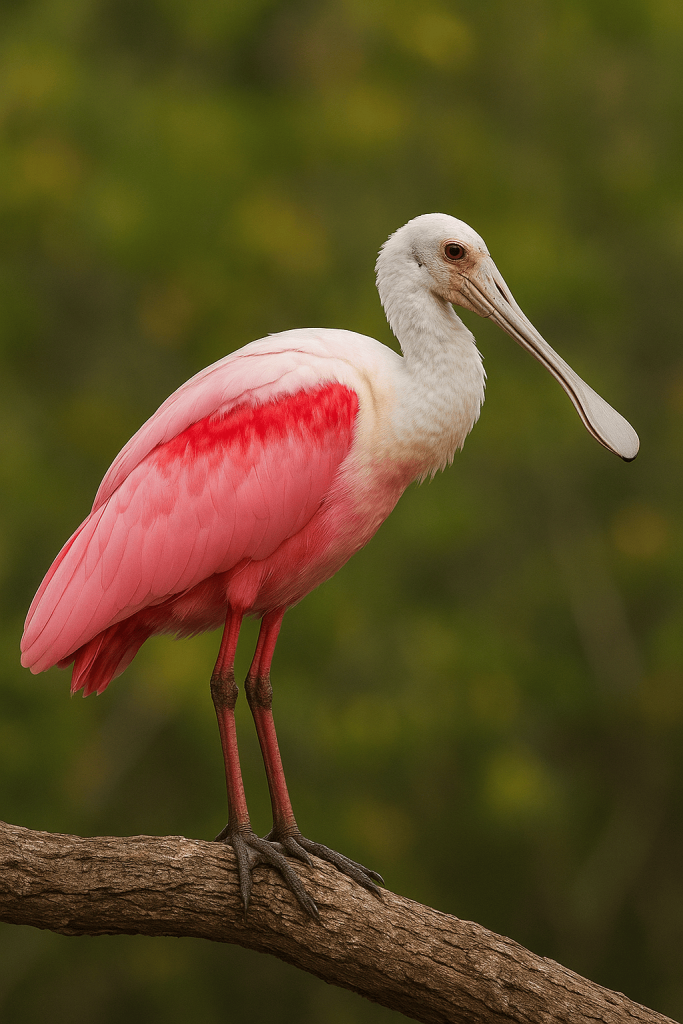
The roseate spoonbill’s color is more than decoration — it’s a living reflection of its diet.
Unlike many birds whose color is genetic, spoonbills absorb pigment from the food they eat.
Their menu includes shrimp, snails, and small crustaceans that feed on red algae rich in carotenoids — the same natural pigment that makes carrots orange and flamingos pink.
When spoonbills digest those pigments, they are broken down and deposited into their feathers, skin, and even the scales on their legs. The result? That iconic rose blush that deepens with age and good nutrition.
Fun facts that surprise many visitors:
- Juvenile spoonbills are almost white — they blush pink as they mature.
- A well-fed bird glows brighter; color fades in poor feeding seasons.
- Males and females are equally pink — their shade has nothing to do with gender.
- Each feather’s color can shift slightly during molt, like watercolor layers changing tone.
Their beauty, then, is not just natural — it’s earned, feather by feather, meal by meal.
🌴 The Spoonbill’s Strange Beak — Nature’s Water Dancer
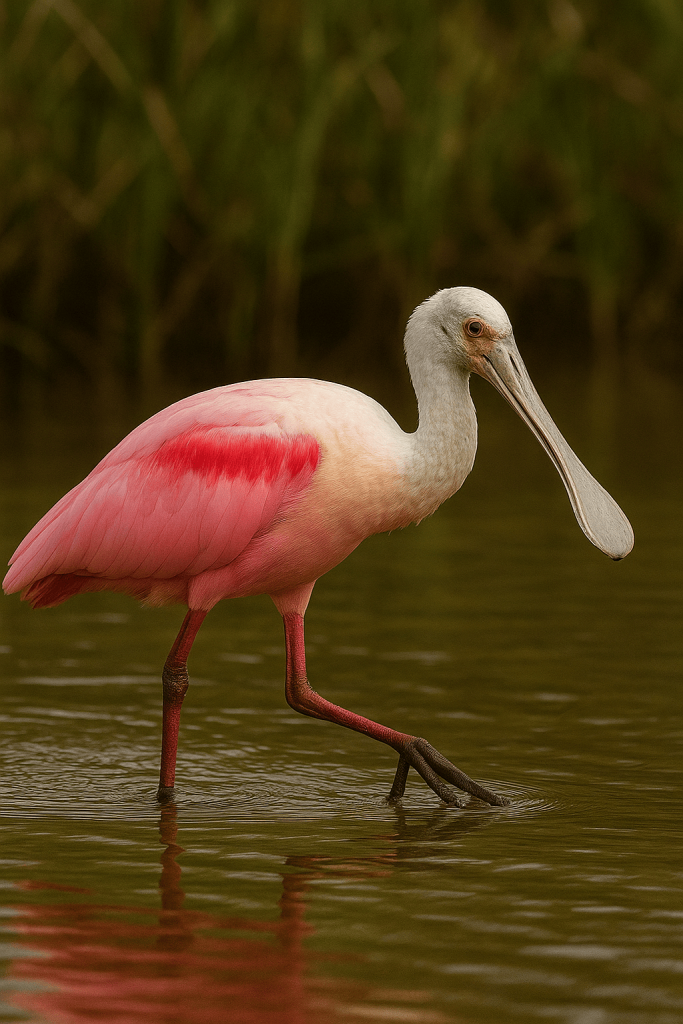
From a distance, that flat, spoon-shaped bill might look clumsy. Up close, it’s a masterpiece of design.
The spoonbill feeds by sweeping its bill side to side through shallow water, feeling for movement rather than seeing it.
Tiny sensors in the bill can detect ripples or vibrations from fish, shrimp, and insects.
When prey brushes the inside edge — snap! The bill closes in a fraction of a second.
Watch a spoonbill feed and you’ll see a rhythm — slow steps, soft ripples, bill sweeping in perfect arcs.
They move in lines or small flocks, often shoulder-to-shoulder, stirring up food for each other as they go.
It’s teamwork disguised as dance.
💡 More hidden wonders:
- They often mix with ibises or herons, cooperating silently.
- Spoonbills use their bill like a radar — even in murky water where vision fails.
- Their bill shape evolved independently from ducks — a case of convergent evolution.
- Young birds learn the “sweep rhythm” from adults — a learned behavior, not instinct alone.
In the stillness of Sanibel’s lagoons, that quiet motion becomes hypnotic — nature’s version of slow jazz.
🌎 Where to Spot Them — Hidden Corners of Sanibel
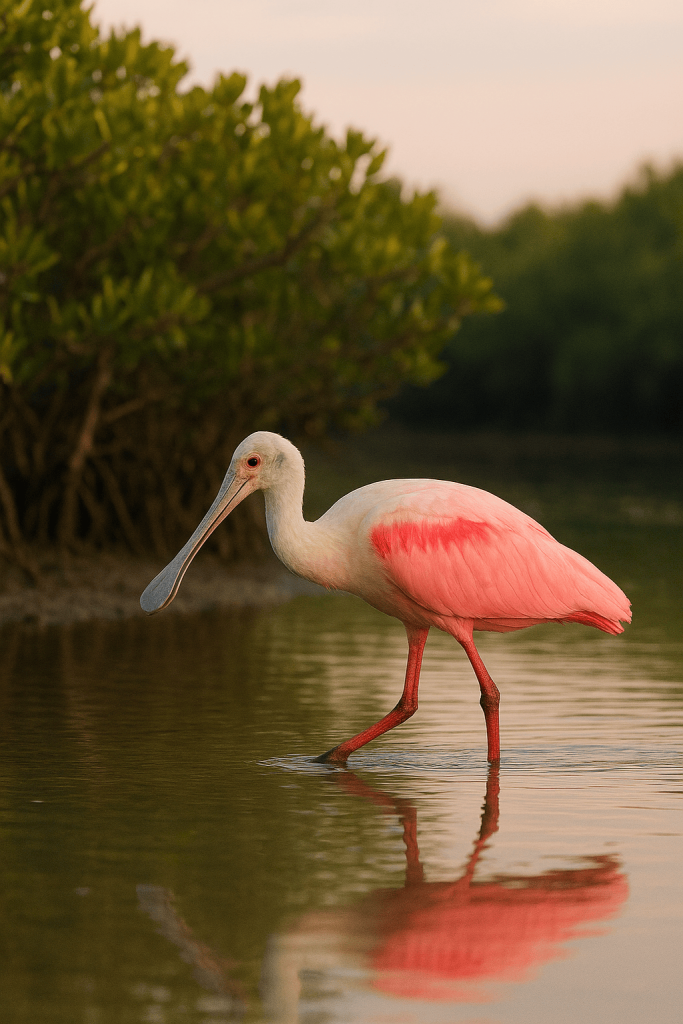
The best part? You don’t need to be a biologist to see one.
Sanibel Island remains one of the easiest — and most rewarding — places in Florida to spot roseate spoonbills in the wild.
Here are the local favorites where sightings are common:
📍 J.N. “Ding” Darling National Wildlife Refuge
At low tide, spoonbills wade near the mangroves and mudflats along Wildlife Drive. Go early morning or just before sunset for the best light.
📍 Tarpon Bay
Kayakers sometimes see them up close near the bay’s back channels. Move slowly, and you might catch their reflection mirrored in the water.
📍 Bailey Tract & Lighthouse Beach
Smaller groups occasionally feed here after summer rains — it’s a great place for quiet observation and photography.
📷 Photography tip:
Keep the sun at your back, crouch low, and shoot from eye level. If your camera has burst mode, use it — that’s how you catch the perfect mid-glide shot.
🌤️ Best months:
January through April are peak times, but sightings can happen year-round after warm rains.
Conclusion: The Spirit of Sanibel in Flight
Every sighting of a roseate spoonbill feels like a gift — fleeting, soft, and alive with color.
They remind us how delicate the balance of this island truly is: clean water, quiet lagoons, and patience make their presence possible.
So next time you’re near the shore, slow down. Watch the light change.
Maybe, if you’re lucky, a pink shimmer will glide by — a living brushstroke across Sanibel’s morning sky.
And when it does, take a moment to smile. Because here on Sanibel, even the wild has a heartbeat of grace.
💬 Have you spotted a spoonbill lately?
Share your photo or memory below — your story helps keep the island’s magic alive.

I’m Ayla Wolesky, and I’ve spent years exploring every corner of Sanibel Island. From its pristine beaches to the hidden gems only locals know about, I’m passionate about sharing everything this beautiful island has to offer. Whether it’s the best spots for shelling, the wildlife that makes Sanibel so special, or where to enjoy a perfect sunset, I’ve got you covered. My goal is to provide insider tips and up-to-date information that will help you experience Sanibel Island like never before.


